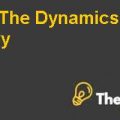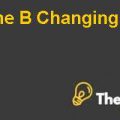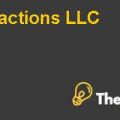Those success factors were regarding holding the right amount of debt and ability to repay on time, but later, the situation was unfavourable to the company’s concern because the new products failed to create the business value. Thus, damaged the company’s operations that were directly proportional to damage the credit chain with the creditors. The main reason for such loss as compared to past performance was the lack of creativity and innovation held by Coleco which made unsuccessful decisions to introduce the new products in the market.
However, there were minor problems in the past because Coleco was managing the business efficiently and had a high creditworthiness with the creditors as well as shareholders. But the recent event was somehow out of control for the company and made such worst case scenario which was directly linked to bankruptcy.
So, under all circumstances, it shows that Coleco was not following the alternative solution in the event of such change. The business model and practice was not executing well and not responding quickly to theimmediate situation. The company could have an option to revise the business model and try to overcome such horrible situation, but the management was not eager to do so. Therefore, it showed alack of managerial ability to respond appropriately. Also, there was a lack of decision-making process in the operational concern.
Coleco Industries, Inc Harvard Case Solution & Analysis
It is concluded that these two highlighted facts were the major causes for entering into the bankruptcy and not allowing the business to overcome and rebuild on a quick basis unless it could negotiate with the existing creditors in order to restructure the business to cover the massive losses. But that was never the case because these creditors already focused on to collect their wealth to (or “intending to”) minimising the losses.
Financial Analysis of Coleco
Sources and uses of cash
From the following analysis, it seems that the company had the excess cash to retain for business expansion after all the payments were made. The results are indicating the past trends where Coleco had the ability to visualise the business operations and increase the decision-making power to diversify the operational concerns. However, the recent situation was in contrast to it; it shows that the company had no funds to retain or expand the business and considered negative retained earnings to pay off the creditor’s obligations and other business expenditures. The scenario damaged the shareholder’s wealth and not enabling the company to keep the fund’s margin as compared to the past performance.
Analyse the level of Z-score to predict the consequences of Bankruptcy
Under the terms and conditions of bank regulatory, it has been determined that there were some benchmarks or score to retain outside the boundary of bankruptcy. So, the margins according to the regulators indicate that in the recent two years, Coleco was standing in the score of bankruptcy and also showstheinability to come out of the level because the score was very low and difficult to jump into another level. In order toanalyse the probability of bankruptcy, several ratios need to be considered to predict the level of financial health of the company. These ratios indicate the importance in the internal process of control. So, it is concluded that Coleco was far away to the boundary of bankruptcy in 1980-85, but in the recent years, the situation has completely changed.
Yield to maturity for subordinated debentures and credit market’s assessment
To come up with the yield of subordinated debt, a concept of matrix pricing of the bond has been implemented under the given scenario where two yields are compared to each other and finalise the actual yield. Thus the YTM requirements for subordinated debenture is to determine the market yield and correspond yield of Coleco debentures. Therefore, these two yields are compared with the function of linear interpolation. The final rate through the use of related function calculated the yield of 9.91% and 11.77% in 1986 and 1987 respectively.
However, according to the credit market assessment, the risk was high for the company as well as for the creditor because it exceeded the benchmark rate proposed by the industry. The concept shows that if the risk would be high for the investor, then he would demand ahighrate of return. It shows that the overall market for these bonds was not as risky as the company created itself. Moreover, there was a lot of difference between the bond market and bonds issued by Coleco due to the lack of solvency that allowed the investors to increase the demand for high return subjected to taking high risk. So, the credit assessment is very weak for Coleco as compared to the average market level.
Equity market reaction and assessment over Coleco
Under the following results of the stock, it is identified that the market dropped some of the points in the selected period due to adecrease in the value of stock for Coleco. Also, there was a vastdifference between the return of company and the benchmark return of S&P 500. According to the assessment of the particular market, it also shows that Coleco would continuously damage the index value and consider a market loss at some time if the company would be unable to recover from theinternal situation.
Otherwise, the overall market capitalization would drop and make a negative impact on the index registered companies. However, the overall results show that the average rate of return of S&P 500 was 13.92% whereas the return of Coleco dropped to -6.95%. So, a huge difference indicates a threat to the market performance.
Conclusion
From the following results, it is concluded that Coleco was suffering from lower capital adequacy level or lack of available capital to invest or payoff the debt to the creditors. However, according to the final assessment, the management drew the possibility to enter into the bankruptcy and did not had sufficient decision-making power or an opportunity to redevelop the capital structure. So, it is recommended to perform a merger and acquisition with the similar company because it would allow to divide the huge debt burden and increase the possibility of restructuring the capital quickly. If the unexpected situation would not be accepted by any other company for merger and acquisition, then it can be said that the company should file for bankruptcy at the end and pay out all the certain obligations to the shareholders and creditors.
Exhibits
| 1980-1985 | 1986-1987 | Change | |
| Sources of funds | |||
| Total current long-term debt | $20,382 | $20,343 | 99.81% |
| Senior long-term debt | 127,927 | 25,973 | 20.30% |
| Notes | 272,467 | 257,702 | 94.58% |
| Subordinated debentures | 209,316 | 429,081 | 204.99% |
| Convert. subord. debent. | 128,528 | 157,753 | 122.74% |
| Common stock | 79,629 | 34,942 | 43.88% |
| Capital in excess of par value | 77,370 | 34,942 | 45.16% |
| Retained earnings (deficit) | 224,004 | (198,836) | -88.76% |
| Cash and cash equivalent | $190,159 | $117,116 | 61.59% |
| Total sources of funds | $1,329,782 | $879,016 | 66.10% |
| Uses of funds | |||
| Inventories | 433,521 | 146,148 | 33.71% |
| Property, net change | 33,043 | 10,465 | 31.67% |
| SG&A | 867,704 | 479,712 | 55.29% |
| Interest expense | 103,067 | 102,304 | 99.26% |
| Total uses of funds | 1,437,335 | 738,629 | 51.39% |
| ($107,553) | $140,387 | ||
| Adjustments to Balance Sheet | |||
| Cash and Cash Equivalent | $98,969 | ($76,101) | -76.89% |
| Retain Earnings | 43,810 | (213,712) | -487.82% |
| Senior-long term debt | 4,171 | (12,085) | -289.74% |
| Subordinated debentures | 52,445 | 162,914 | 310.64% |
| $199,395 | ($138,984) | -69.70% | |
| Total Adjusted funds | $91,842 | $1,403 |
| (Working Capital / Total Assets) | $ 0.46 | $ 0.47 | $ 0.18 | $ 0.04 |
| ( Retained Earnings/ Total Assets) | $ 0.24 | $ 0.16 | $ (0.08) | $ (0.28) |
| (EBIT/Total Assets) | $ 0.34 | $ 0.30 | $ (0.13) | $ (0.09) |
| (Market Value of Common and Preferred Stock / Total Liabilities) | $ 0.19 | $ 0.06 | $ 0.03 | $ 0.03 |
| (Sales / Total Assets) | $ 2.26 | $ 2.15 | $ 0.93 | $ 1.04 |
| Score Probability of Short-term illiquidity | 3.49 | 3.13 | 0.93 | 0.74 |
| Market YTM | 8.70% | 9.17% |
| Corporate Level | 11.125% | 14.375% |
| Linear Interpolation (Adjusted YTM) | 9.91% | 11.77% |
This is just a sample partial case solution. Please place the order on the website to order your own originally done case solution.













